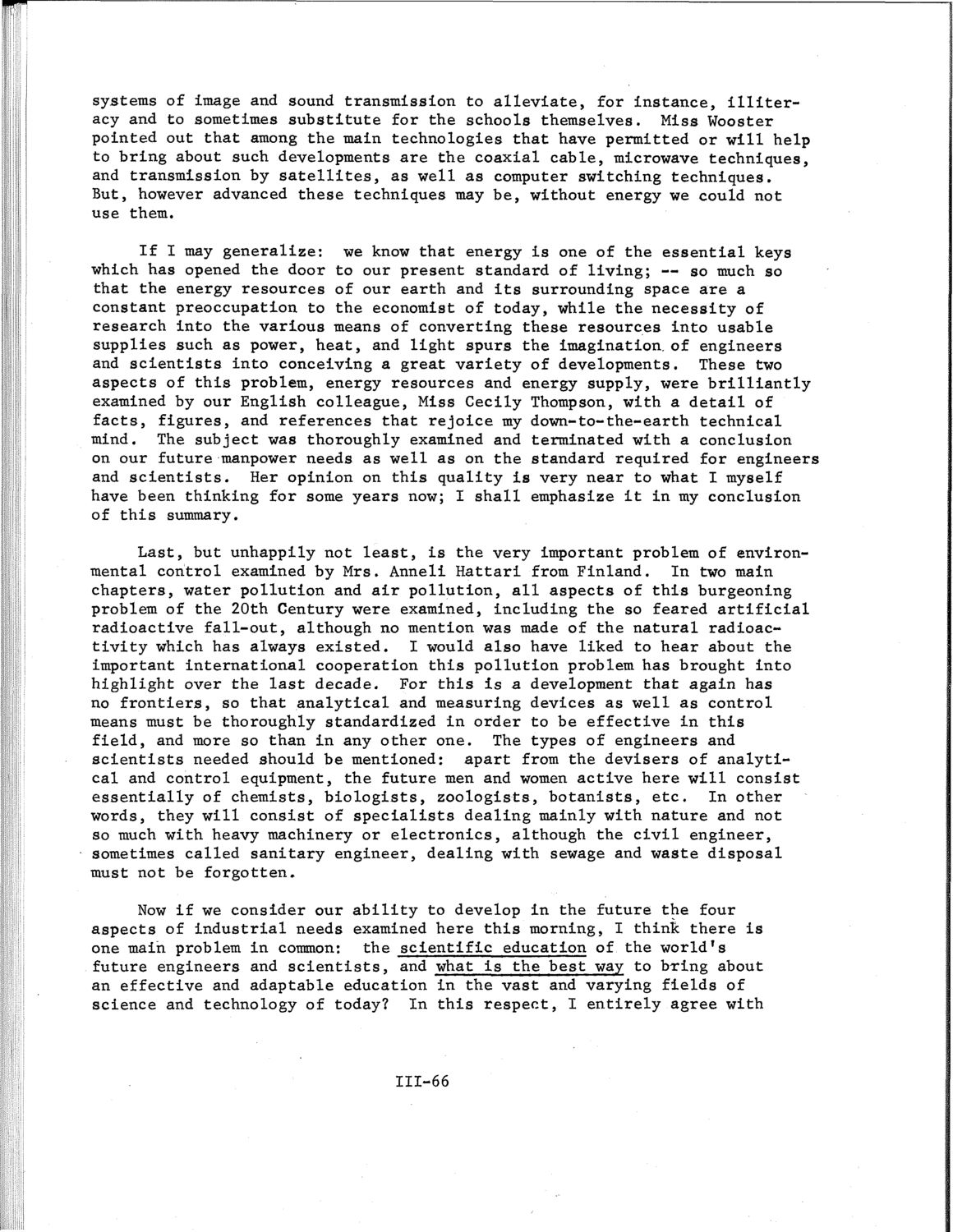| |
| |
Caption: SWE - Proceedings of the First International Conference of Women Engineers and Scientists
This is a reduced-resolution page image for fast online browsing.

EXTRACTED TEXT FROM PAGE:
systems of image and sound transmission to alleviate, for instance, illiteracy and to sometimes substitute for the schools themselves. Miss Wooster pointed out that among the main technologies that have permitted or will help to bring about such developments are the coaxial cable, microwave techniques, and transmission by satellites, as well as computer switching techniques. But, however advanced these techniques may be, without energy we could not use them. If I may generalize: we know that energy is one of the essential keys which has opened the door to our present standard of living; -- so much so that the energy resources of our earth and its surrounding space are a constant preoccupation to the economist of today, while the necessity of research into the various means of converting these resources into usable supplies such as power, heat, and light spurs the imagination, of engineers and scientists into conceiving a great variety of developments. These two aspects of this problem, energy resources and energy supply, were brilliantly examined by our English colleague, Miss Cecily Thompson, with a detail of facts, figures, and references that rejoice my down-to-the-earth technical mind. The subject was thoroughly examined and terminated with a conclusion on our future manpower needs as well as on the standard required for engineers and scientists. Her opinion on this quality is very near to what I myself have been thinking for some years now; I shall emphasize it in my conclusion of this summary. Last, but unhappily not least, is the very important problem of environmental control examined by Mrs. Anneli Hattari from Finland. In two main chapters, water pollution and air pollution, all aspects of this burgeoning problem of the 20th Century were examined, including the so feared artificial radioactive fall-out, although no mention was made of the natural radioactivity which has always existed. I would also have liked to hear about the important international cooperation this pollution problem has brought into highlight over the last decade. For this is a development that again has no frontiers, so that analytical and measuring devices as well as control means must be thoroughly standardized in order to be effective in this field, and more so than in any other one. The types of engineers and scientists needed should be mentioned: apart from the devisers of analytical and control equipment, the future men and women active here will consist essentially of chemists, biologists, zoologists, botanists, etc. In other words, they will consist of specialists dealing mainly with nature and not so much with heavy machinery or electronics, although the civil engineer, sometimes called sanitary engineer, dealing with sewage and waste disposal must not be forgotten. Now if we consider our ability to develop in the future the four aspects of industrial needs examined here this morning, I think there is one main problem in common: the scientific education of the world's future engineers and scientists, and what is the best way to bring about an effective and adaptable education in the vast and varying fields of science and technology of today? In this respect, I entirely agree with 111-66
| |